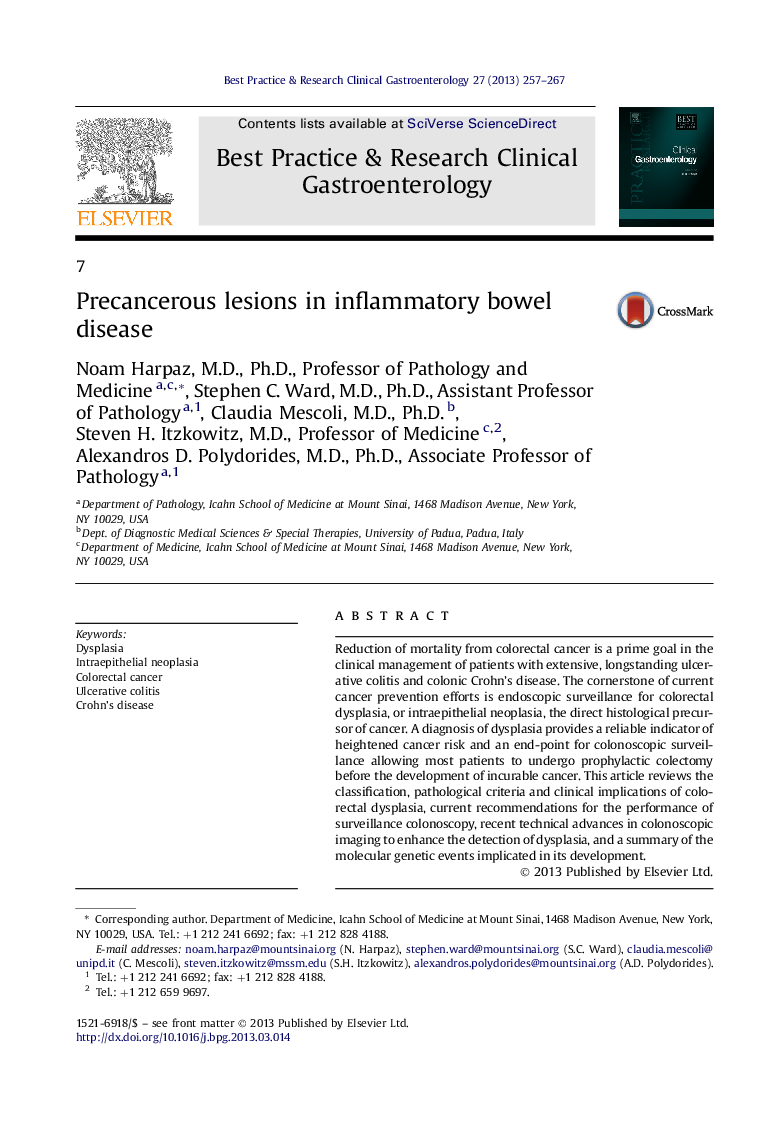| کد مقاله | کد نشریه | سال انتشار | مقاله انگلیسی | نسخه تمام متن |
|---|---|---|---|---|
| 3254343 | 1207196 | 2013 | 11 صفحه PDF | دانلود رایگان |

Reduction of mortality from colorectal cancer is a prime goal in the clinical management of patients with extensive, longstanding ulcerative colitis and colonic Crohn's disease. The cornerstone of current cancer prevention efforts is endoscopic surveillance for colorectal dysplasia, or intraepithelial neoplasia, the direct histological precursor of cancer. A diagnosis of dysplasia provides a reliable indicator of heightened cancer risk and an end-point for colonoscopic surveillance allowing most patients to undergo prophylactic colectomy before the development of incurable cancer. This article reviews the classification, pathological criteria and clinical implications of colorectal dysplasia, current recommendations for the performance of surveillance colonoscopy, recent technical advances in colonoscopic imaging to enhance the detection of dysplasia, and a summary of the molecular genetic events implicated in its development.
Journal: Best Practice & Research Clinical Gastroenterology - Volume 27, Issue 2, April 2013, Pages 257–267